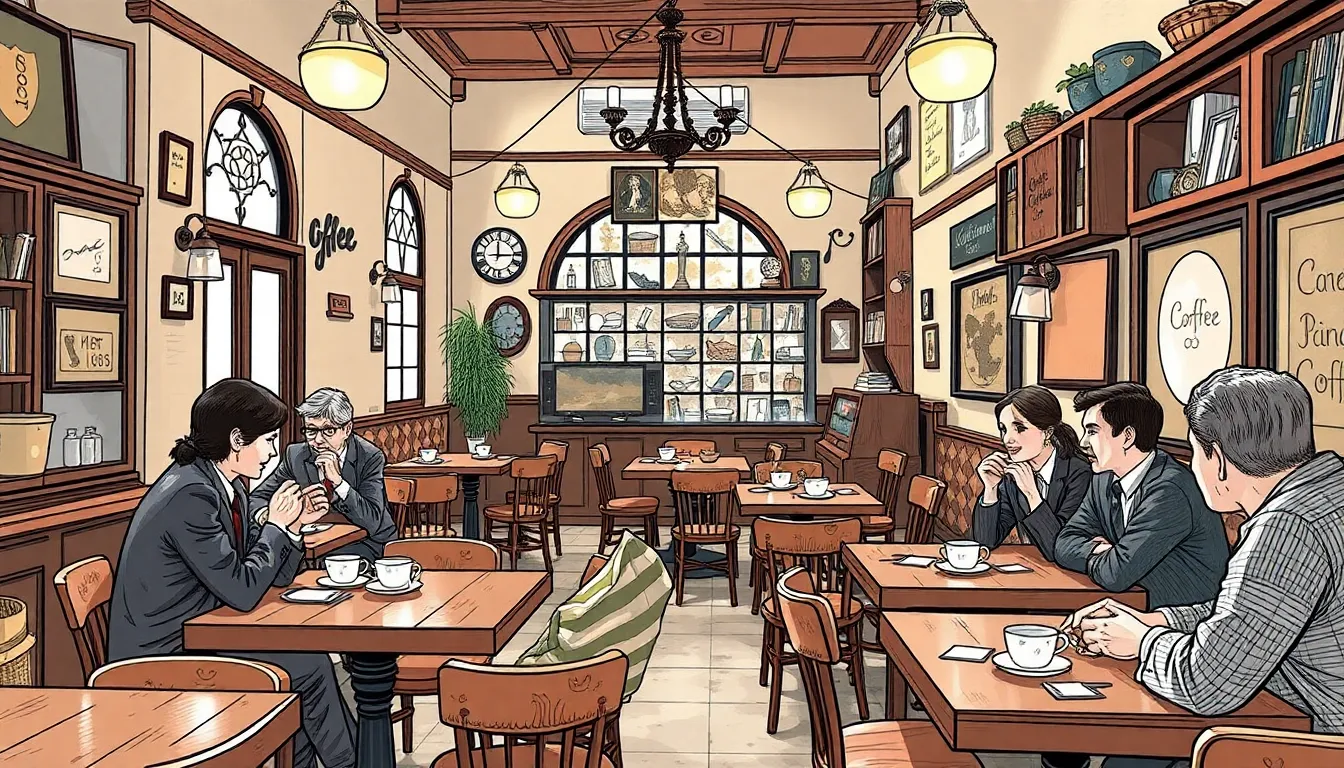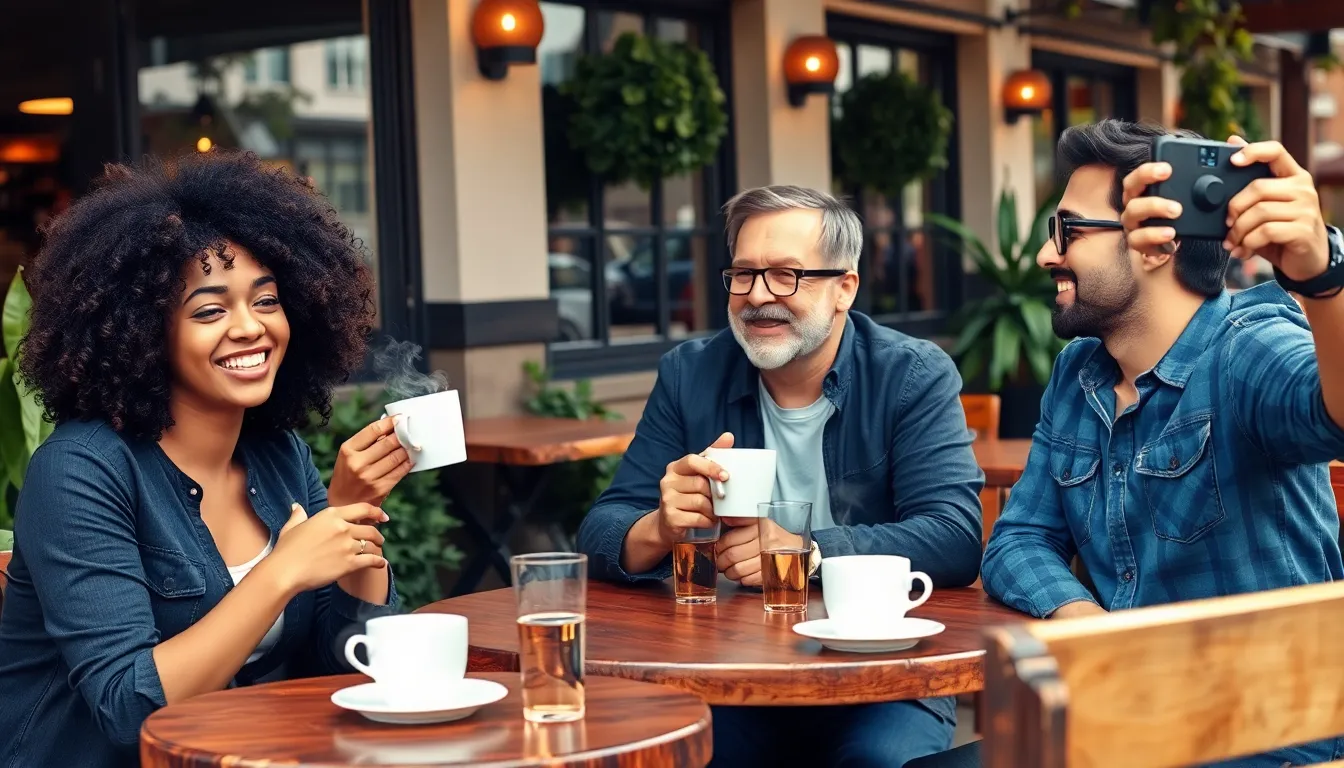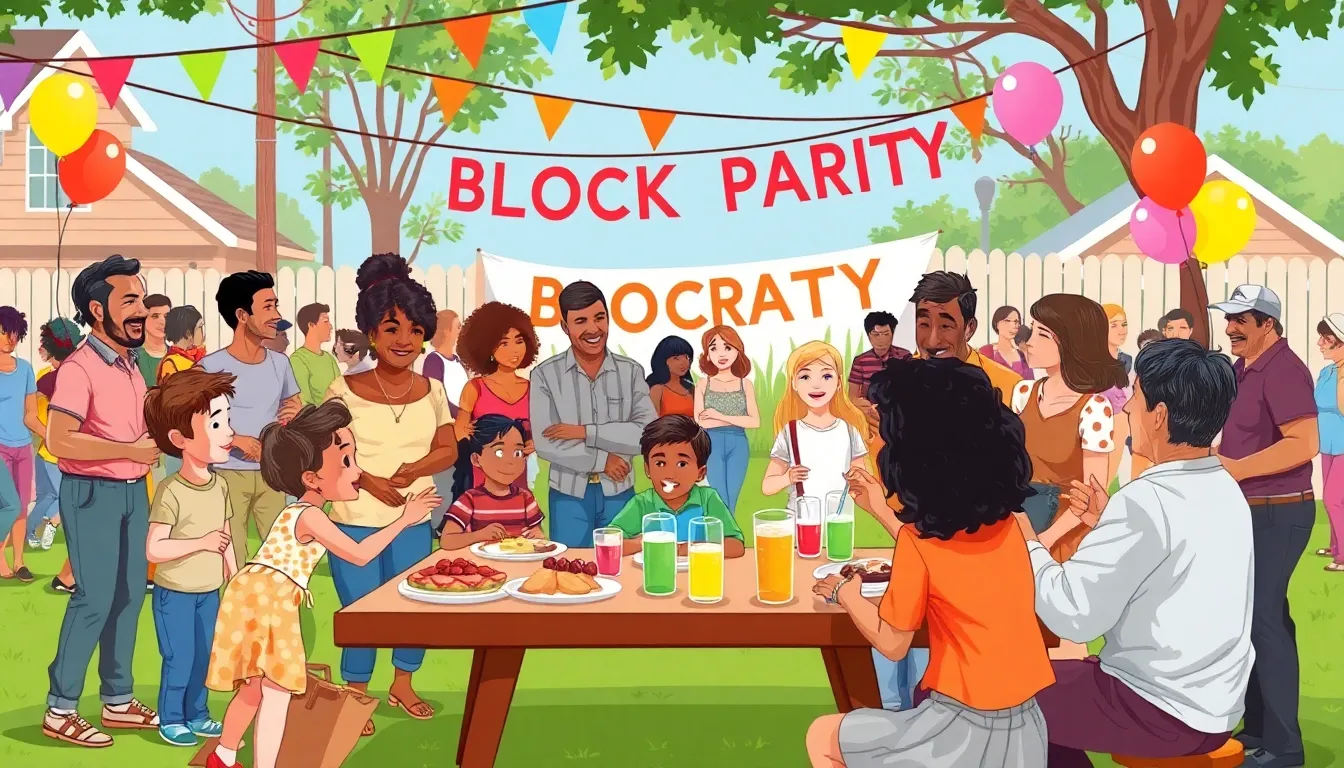Coffee culture isn’t just about sipping a hot cup of joe; it’s a delightful blend of rituals, connections, and a dash of caffeine-fueled magic. From the bustling cafés of Paris to the cozy corners of Seattle, coffee has woven itself into the fabric of daily life, transforming a simple beverage into a global phenomenon. It’s where friendships brew, ideas spark, and the occasional existential crisis is fueled by an espresso shot.
In a world where the grind can feel relentless, coffee culture offers a comforting pause. It’s the warm hug in a mug, the reason for that extra skip in one’s step, and the perfect excuse to gather with friends. So grab your favorite cup and dive into the rich tapestry of coffee culture, where every sip tells a story and every café has a secret waiting to be discovered.
Table of Contents
ToggleOverview of Coffee Culture
Coffee culture transcends simple consumption; it’s an intricate network of traditions and social practices centered around coffee. Various cities around the world, including Paris, Seattle, and Tokyo, showcase distinct coffee customs. Each locale brings its unique influences, making coffee a vibrant element of daily life.
In Italy, espresso bars serve as local social hubs. Patrons stand at the counter, exchanging greetings and banter, creating a lively atmosphere. Meanwhile, coffeehouses in Vienna emphasize relaxation and conversation, often featuring art and music.
In modern society, coffee serves as a conduit for connection. Friends gather at cafes to catch up, while coworkers meet for brainstorming sessions over brews. These exchanges foster creativity and collaboration, highlighting coffee’s role in professional landscapes.
Moreover, coffee culture incorporates various brewing methods, from pour-over to cold brew. Each technique offers distinct flavors, appealing to diverse palates. Understanding these methods enhances appreciation for the drink itself.
Environmental and ethical considerations also shape coffee culture. Many consumers prioritize sustainably sourced beans, supporting fair trade practices. This awareness reflects a broader trend towards responsible consumption, influencing how coffee is produced and marketed.
Coffee culture represents a tapestry woven with history, connection, and evolving preferences. Every cup holds a story, inviting individuals to engage with the global coffee community. Enthusiasts continue to seek out new experiences, ensuring coffee remains a cherished part of everyday life.
Historical Roots of Coffee Culture

Coffee culture stems from deep historical roots, intertwining with rituals and traditions that shape communities around the world.
Origins of Coffee
The coffee plant, Coffea, originated in the highlands of Ethiopia. Legends speak of a goat herder named Kaldi discovering coffee after noticing his goats’ exuberance following berry consumption. By the 15th century, coffee reached Yemen, where it became an integral part of social gatherings. From Arabia, trade routes spread coffee to Persia, Egypt, and beyond, establishing coffee’s status in society. It wasn’t long before major cities adopted coffee as a beverage, leading to the development of coffeehouses, known as qahveh khaneh, which became centers for communication and commerce.
Evolution Through History
Through the centuries, coffee evolved in various cultures. In the 17th century, coffeehouses emerged as popular meeting spots across Europe, fostering intellectual conversation and cultural exchange. Political discussions thrived in London’s coffeehouses, while Vienna’s establishments introduced coffee with cream and sugar, inspiring the famous Austrian coffeehouse culture. The Dutch played a significant role in expanding coffee cultivation, introducing it to Java in the 1600s, thus altering global trade patterns. Over time, coffee transitioned from a luxury item to a daily staple, reflecting societal shifts and innovations in brewing techniques.
Regional Variations in Coffee Culture
Coffee culture varies widely across regions, reflecting local tastes and traditions. Each area boasts unique rituals that elevate coffee beyond a mere beverage.
European Coffee Traditions
Italy champions espresso culture, where short, strong shots fuel bustling cafés. Those in France enjoy leisurely coffee breaks, often complemented by pastries. In Austria, coffeehouses serve as cultural landmarks, fostering conversation and artistic expression. Spain embraces café con leche, merging coffee with milk for a rich drink enjoyed throughout the day. Sweeter variations, like Turkish coffee, demonstrate the diversity within European preferences.
Asian Coffee Practices
Vietnamese coffee highlights strong brews, often sweetened with condensed milk, served through elaborate drip methods. Japan embraces precision with pour-over techniques, celebrating craftsmanship in every cup. In South Korea, the coffee scene thrives with innovative cafés featuring unique flavors and aesthetics. Traditional ceremonies in Yemen showcase the longstanding cultural significance of coffee, intertwining social interaction with preparation methods. Diverse brewing styles in Asia reveal a rich tapestry of experiences.
American Coffee Trends
Cold brew coffee surged in popularity, catering to the demand for refreshing beverages. Local artisanal roasters thrive, emphasizing single-origin beans to enhance flavor profiles. Specialty cafés offer diverse options, from nitro-infused drinks to organic blends, appealing to evolving consumer tastes. Sustainability concerns drive ethical sourcing practices among American coffee drinkers. Communities rally around coffee events, promoting local culture and fostering connections.
The Role of Coffee Shops in Society
Coffee shops serve as vital spaces for social interaction and community engagement. They often double as meeting points, where people gather to share ideas or simply enjoy a conversation over a cup of coffee.
Social Gatherings and Community Life
Coffee shops facilitate connections among individuals, promoting conversation and fostering relationships. In bustling cities, they act as informal workplaces, giving professionals a change of scenery from traditional offices. These establishments frequently host events, such as open mic nights or art displays, showcasing local talent. Regular visitors develop a sense of belonging, forming friendships that extend beyond the coffee shop’s walls. Community initiatives often emerge in these spaces, further reinforcing their role in local culture.
The Rise of Specialty Coffee
Specialty coffee has transformed the landscape of coffee consumption. With an emphasis on quality, unique flavors, and sustainable sourcing, these shops attract a discerning clientele. The growth of artisanal roasters highlights the importance of single-origin beans and ethical practices in today’s market. Customers increasingly seek out knowledge-driven experiences, asking baristas about brewing methods and flavor profiles. This trend enhances appreciation for coffee craftsmanship, while also supporting small-scale farmers across the globe. Specialty coffee shops often serve as cocreators of a vibrant coffee culture, inviting patrons to explore and expand their palates.
Impact of Coffee on Lifestyle and Health
Coffee significantly influences daily lifestyles and health choices. This beverage, enjoyed by millions, often plays a role in social rituals and personal routines.
Benefits of Coffee Consumption
Caffeine, a primary component of coffee, enhances alertness and concentration. Numerous studies indicate that moderate coffee consumption may reduce the risk of certain diseases. According to research from the American Journal of Clinical Nutrition, drinking 3 to 5 cups daily correlates with a lower incidence of Parkinson’s and Alzheimer’s diseases. Antioxidants in coffee contribute to its health benefits, helping to combat inflammation and oxidative stress. Many enjoy coffee for its potential to boost metabolism, aiding in weight management. Moreover, regular intake can improve sports performance by increasing adrenaline levels, fostering better endurance and stamina.
Potential Risks and Considerations
Excessive coffee consumption can lead to negative side effects. Individuals may experience anxiety or sleep disturbances with high caffeine intake. The Mayo Clinic notes that more than 400 mg of caffeine daily may result in negative health impacts. Pregnant or breastfeeding individuals must exercise caution, as high caffeine may affect fetal development or milk production. Those with specific medical conditions, such as heart arrhythmias, should consult healthcare providers regarding coffee consumption. Maintaining moderation plays a crucial role in enjoying coffee’s benefits while minimizing its risks.
Coffee culture stands as a vibrant testament to human connection and creativity. It transcends mere consumption and weaves itself into the fabric of daily life, enriching social interactions and fostering community. From the bustling cafés of Paris to the serene tea houses of Tokyo, each locale offers a unique experience that reflects its history and traditions.
As individuals continue to explore diverse brewing methods and sustainable practices, the appreciation for quality coffee only deepens. The rise of specialty coffee shops emphasizes this shift, inviting patrons to savor each cup while supporting ethical sourcing. Ultimately, coffee culture remains a dynamic and evolving phenomenon, inviting everyone to partake in its rich narrative and shared experiences.



